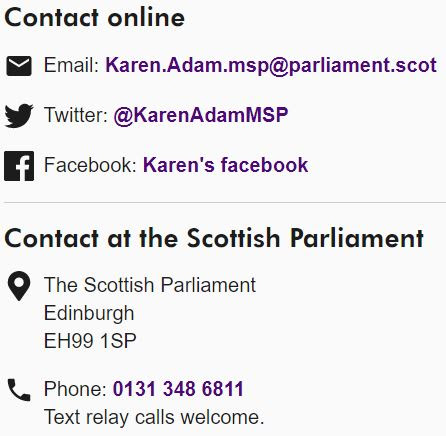Better Business: How to Go Greener with Staff to Improve Performance aims to make companies and organisations realise that climate-friendly employee policies and better productivity can go hand-in-hand. The booklet offers examples of good practice taken from a wide-ranging study covering public and private sector and large and small organisations – including Coca Cola, BT, SSE, Edinburgh Hilton and Aberdeenshire Council.
The guide was launched by Stewart Stevenson on the first day of Climate Week 2012 at a meeting of Scotland’s 2020 Climate Group. Earlier, the authors of the report had described its findings to the 2020 group.
Mr Stevenson, the Scottish Government’s Minister for Environment and Climate Change, said:
“This guide outlines the ambition and innovation of a range of companies and demonstrates how low carbon activity can be good for business. It has been produced through collaboration between the public and private sectors in Scotland and shows how everyone must work together to help reduce our emissions and meet our targets.”
The booklet not only includes examples of best practice in workplaces, but also looks at how such initiatives impact upon employees’ behaviour at home. The focus is on workplace initiatives which others can copy, and which are either no-cost or low-cost. A detailed report into the research is due to be published in the near future, including details of good practice in Scottish workplaces at organisations as diverse as Aberdeenshire Council, SSE and Halcrow.
Louise Macdonald, Chief Executive of Young Scot and convener of the 2020 Public Engagement Sub-Group, said:
“The places where we all work offer us a fantastic space to support people to learn and take action together to create a low carbon Scotland. Good habits can be formed and practical experiences shared by colleagues, whether that is on the shop floor or by the water cooler. It is fantastic to see the examples in this guide, and we on the 2020 Group look forward to hearing the stories from workplaces across the country of how they have been inspired by the guide to take their own action.”
The guide urges organisations to get involved in low carbon activity as a way of making themselves more competitive, strengthening customer relationships and showing leadership and innovation to build their reputation. It also suggests that it can increase staff morale and loyalty, and build a culture of employee involvement. Bringing staff in at an early stage can build trust and encourage more and better ideas, it adds.
Some of the ideas are very basic – using recycling bins, providing bike racks and monitoring energy use- while others represent bigger challenges, such as introducing restrictive policies to reduce car use.
Examples of good practice:
Aberdeenshire Council: the local authority, which covers 2500 square miles, introduced flexible working programme Worksmarton a voluntary basis for staff, many of whom travel long distances to get to work. Those signing up have a number of options:
- Fixed working (at a single base)
- Flexible working (splitting time between a fixed base and home, with the majority of time spent at the base)
- Mobile working (splitting time between a fixed base and remote working, with the majority of time spent working remotely/from home), or
- Home working (working from home around 90% of the time).
SSE: The energy company has reduced the number of car parking spaces available to staff and introduced a permit system where staff are only allowed to park in the company car park on 4 out of 5 days in the working week. Those who car share can park every day and have access to preferential spaces. Car sharing is encouraged via links to a website that allows staff to find other people looking for lift shares. SSE also puts restrictions on flying (including ‘no fly months’) and instead promotes telepresence videoconferencing.
Halcrow: The engineering firm has set up an innovative scheme at its Glasgow office, striking a deal with local bus companies to provide its staff with subsidised fares. These are self-funded from income generated from charging staff £5 per week to use the company car park. Parking spaces are allocated according to a range of criteria with those who car share, or travel longer distances, given higher priority. Staff are also provided with information about public transport and cycle routes. In 2009, 12,300 subsidised bus journeys were made among the 350 staff, with estimated saving of 6.4 tonnes CO2. The self-funding scheme means this is an initiative which can make a significant impact without any significant costs.


 Born in 1946 and brought up in Cupar, Fife, I was educated at the local school -
Born in 1946 and brought up in Cupar, Fife, I was educated at the local school - 

















